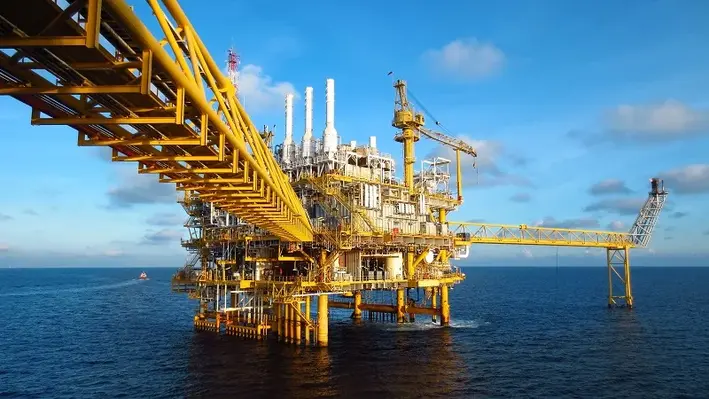
Returning live and in-person, the Offshore Well Intervention Gulf of Mexico 2021 conference treated assembled industry stakeholders to an informative two-day exploration of the state of well intervention in the region and examined the technology and best practices which have the potential to shape campaigns of the future.
Jim Maher, President of Trendsetter Vulcan Offshore (TVO) who co-chaired day one of OWI GOM 2021, opened the conference by noting his delight at finally being able to speak to everyone in person and emphasised that “times of great dislocation, which these clearly have been, are often the times where most innovation comes to the fore.
“As the market recovers, the intervention technologies are among the most viable as they are the closest approximation to short cycle. As we start going again, intervention technologies are certainly going to be among the most competitive for the capital available.”
Following this, over the course of the next two days, attendees were treated to a banquet of engaging sessions featuring presentations and discussions from the most influential service providers, operators, consultants, and more.
BP lead a panel discussion on how the company achieved optimal results on its ongoing RLWI campaign (which began two years ago) and the challenges it has faced and how they will continue to overcome them. Representatives from C-Innovation, Halliburton and JDR Cable Systems joined the discussion and together they explored the innovative tools, equipment and technology which could be deployed in order to achieve the most efficient intervention campaigns.
The implementation of new technology was one of the conference’s clear themes, which Charles Brooks, Technical Sales Representative from Interwell, heavily leaned into as he presented on the Interwell Barrier Verification System. This market-leading barrier assurance tool provides, as demonstrated by a case study from the GOM, time efficiency, confident and correct verification of well barrier and integrity, the ability to reduce tensile stress from pressure from pressure testing from surface (especially in fragile well constructions) and more. This solution was quoted as the most extensive downhole barrier verification the operator has performed in the region, proving its quality.
Maxim Volkov, Principal Domain Champion at TGT Diagnostics, followed closely on Brooks’ heels by introducing the Sand Flow product which precisely locates sand entry to the wellbore and provides a qualitative sand count, indentifying problem zones to help combat the serious issue of sand production. Through the use of case studies, Volkov demonstrated how the Sand Flow product, when used in tandem with Tendeka’s Filtrex solution, can localise target and fix sand issues affecting wellbores to ensure productivity is restored and integrity is maintained.
Not to be left out, Archer joined the party as Kevin Squyres, Sales and Service Delivery Manager, demonstrated the capabilities of the Stronghold Barricade, Defender and THOR solutions which can eliminate the need for milling, providing an effective alternative to traditional methods of plug and abandonment.
While new technology can bring value, it is also important to understand and asses the risk of incorporating it into intervention campaigns. This topic was covered in detail by industry experts from Schlumberger, United Subsea Specialists, Chevron and CRG Oilfield Abandonment LLC at the session focused on intervention technologies for existing field uplift.
In the following sessions on day one the sessions were dedicated to:
• Understanding the considerations when evaluating different intervention philosophies and technologies. A Baker Hughes presentation highlighted that light well intervention can achieve substantial benefits such as 55% total emissions reductions (when compared to a rig-based operation) as well as cost-saving incentives.
• The consolidation of well opportunities, where representatives from Trendsetter Engineering, BP, MADCON and TGT Diagnostics presented case studies of campaigns that have increased production and extended the profitable life span of wells as well as explored the future opportunities presented by LWI, HWO and coiled tubing technologies.
• Considering lifecycle completion. Shell, BP, PRT Offshore and Welltec associates discussed the completion design considerations; new completion and well technologies which could have an impact on the future well intervention scope; and how regional operating environment influences operations view’s on new well programmes.
• The successful application of real-time enabled coiled tubing for abandonment of a deviated well with complex anomalies. Ed Adams, Customer Engagement Coordinator at Schlumberger showcased a case study on a tricky well which was causing issues for the operator. Schlumberger deployed the ACTive CCL to detect tubing anomalies and implemented a number of solutions to return the well to safe state which was all done in days before hurricane Elsa entered the GOM.
The day was closed with a brief review of the enormous amount of material that was covered with topics such as marketing dynamics, creating value in well intervention and technology and operation considerations in particularly standing out. Before the attendees retired to the networking drinks, they looked ahead to day two and the exciting subjects that were yet to be explored.




